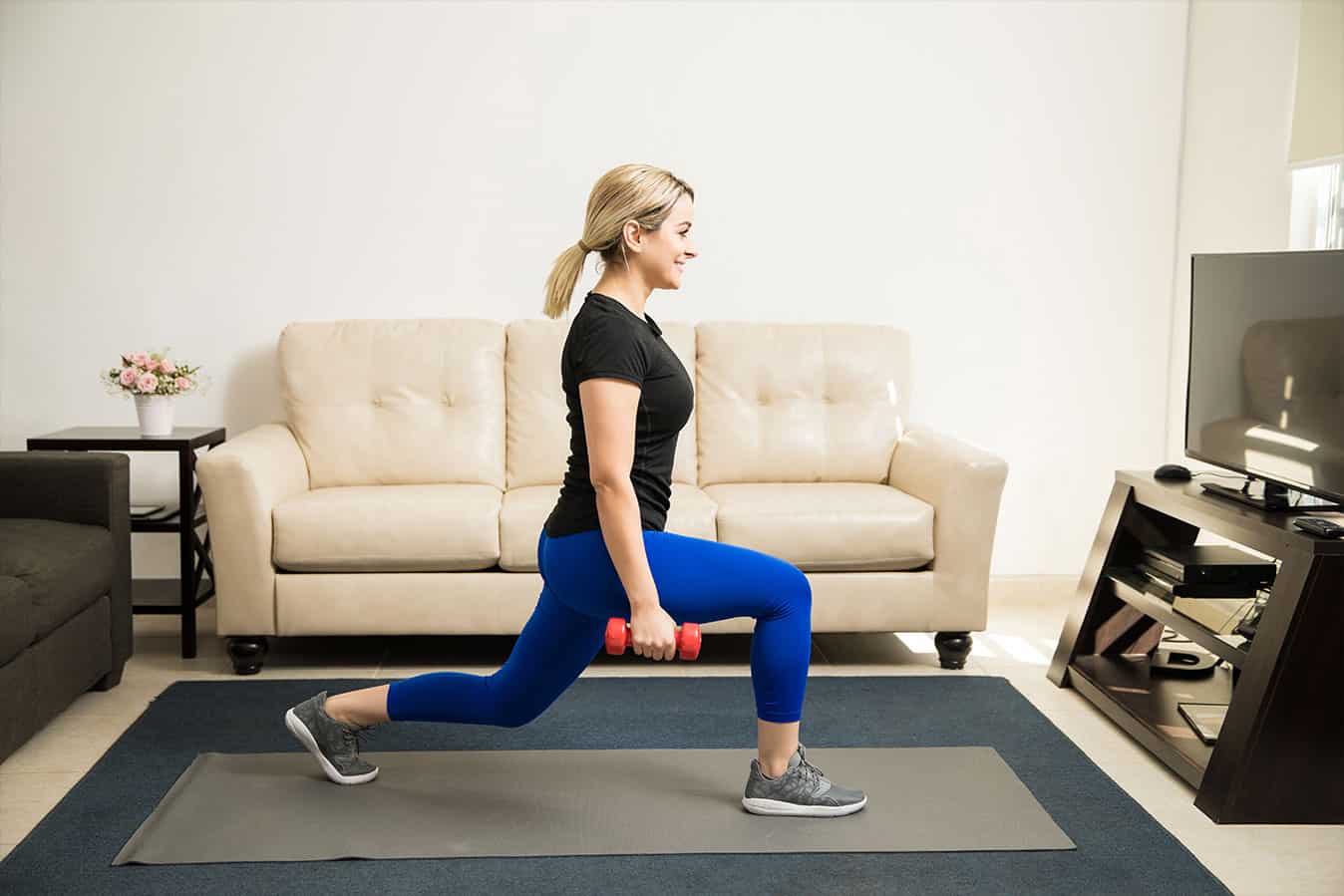Greg Haff is a Professor of Strength and Conditioning at Edith Cowan University. Globally renowned for his research and impact in the field, much of his work has focused on improving resistance training for athletes to enhance performance and prevent injury.
Speaking to the ANMJ, Professor Haff shared his insights regarding strength and conditioning and its benefits for general health and wellbeing.
The benefits of strength and conditioning
“Strength and conditioning activities are a critical part of any health and wellness program,” Professor Haff says.
“It is well documented that strength is one of the most important factors contributing to overall health and wellbeing. In fact, since maximal strength levels are positively related to overall psychological wellbeing, as well as reduce all-cause mortality (Garcia-Hermosa et al. 2018), it is clear that strength training is a powerful tool in an individual’s health and wellness program.”
Using strength training to maintain a healthy amount of skeletal muscle can reduce an individual’s overall metabolic risk, Professor Haff says.
“For example, strength training has been reported to reduce cardiovascular disease risk, insulin resistance, visceral fat levels, as well as improve resting and exercise blood pressure (Hurley et al. 2011). In fact, strength training is associated with improved peripheral glucose uptake which can reduce an individual’s overall diabetes risk (Flack et al. 2010).”
Properly implemented strength training programs have been shown to be effective in offsetting depression, reducing incidents of anxiety, decreasing tension, improving vigour, and enhancing self-efficacy (Fragala et al. 2019), he says.
“Ultimately, a properly implemented strength and conditioning program can enhance a nurse or midwife’s overall health and wellness, as well as improve their ability to conduct the rigorous activities associated with their work environment.”

Strength and conditioning can help nurses and midwives improve performance and reduce injury risk
“When looking at the healthcare profession there is emerging data that indicates nurses have an increased risk of sprains/strains, low back pain, wrist, knee, and shoulder injuries due to the increase in overweight and obese patients that they are working with on a daily basis (Choi and Brings 2015),” Professor Haff says.
“Much like athletes, it is important that nurses and midwives undertake structured strength and conditioning to prepare them for the rigors of their employment.”
Professor Haff says using appropriate strength and conditioning methods to increase overall strength levels can serve as a counter measure for these increased injury risks.
In fact, in sport it is well documented that increasing lower body strength can significantly reduce an athlete’s risk of experiencing a lower limb injury. Additionally, it is well documented that stronger individuals can undertake a higher workload and recover more quickly from that workload when compared to weaker individuals.
“As such, by increasing their overall strength nurses and midwives will be better able to tolerate their demanding workloads and reduce their overall risk of job-related injuries.”
Common misconceptions about strength and conditioning
According to Professor Haff, common misconceptions about strength and conditioning include:
- Strength training is inherently dangerous: When properly undertaken strength training is one of the safest training activities that we can undertake displaying a lower injury risk than cross-country running, soccer, and many other sports
- Strength training is only for athletes: “Many people falsely believe that structured strength training is only for athletes. In fact, strength training is considered to be one of the most important activities that one can do as they age. The overall health benefits of engaging in strength training have been shown to be significant.”
- Strength training is synonymous with bodybuilding: When you mention strength training many people immediately picture the sport of bodybuilding. Professor Haff says.
“While bodybuilding is an interesting sport, it is not truly a representation of performance or health-based strength and conditioning. When employed to enhance performance or improve health and wellness the main aim of strength training is not to simply maximise muscle mass. Instead, the goals are to increase strength in a way that improve movement competency and to improve the function of the skeletal muscle.”
- Not everyone can participate in strength training: “Some people think strength training is not for everyone. However, in reality the beauty of strength training is that it is highly individualised, and everyone can get the benefits of participating in a strength and conditioning program. The trick is to focus on improvement and not comparing yourself with others.”
- Strength and conditioning is too time consuming: One of the biggest excuses that we see is that people state they simply do not have time to participate in strength and conditioning activities,” Professor Haff says.
“The reality is that significant health and wellness benefits can be achieved in participating in these activities for as little as one hour a day five to six days per week. Considering the fact that the average person spends 144 minutes a day on social media, it is clear that there is time available within one’s day that can be used to perform strength and conditioning activities.”
- You have to train to failure to get gains in strength and hypertrophy: There is a growing body of evidence that you do not need to train to failure (ie. lift the heaviest weight you can lift) to increase muscle mass or increase strength, according to Professor Haff.
“In fact, not training to momentary muscular failure in a systematic and structured way provided greater performance and health benefits than training to failure.”
- How time-poor nurses and midwives can fit in strength and conditioning
When thinking of overall health and wellness in addition to a healthy diet, the incorporation of strength training, as well as high intensity interval training, are important self-care activities,” Professor Haff suggests.
“Conceptually, one must consider that in order to care for others we must first care for ourselves. In this regard, incorporating strength training activities into our daily lives can exert a positive influence on our work performance, but also our overall health and wellness.”
“Recently, several researchers have begun to explore the concept of micro-dosing strength training activities. For example, more frequent short duration strength and conditioning activities appear to be effective strategies for those who are time poor. In fact the performance of nine 15-minute sessions a week that contain strength, high intensity endurance training, or strength endurance training have been reported to result in positive performance benefits (Kilen et al. 2015; Cuthbert et al. 2021)

Professor Haff shares his top 6 ways nurses and midwives can improve their strength and conditioning.
- Schedule strength and conditioning training into your week
When engaging in a strength and conditioning program it is important to have a plan. Schedule time within your week that is dedicated to strength training. These pre-planned time slots are dedicated time periods that provide you with the time to engage in activities that can enhance your work performance, as well as your health and wellness. These pre-planned blocks can be as little as 15-30 minutes a day.
- Follow a planned training program designed to meet your needs
Simply walking into the gym and making it up as you go is a recipe for not achieving the benefits you are seeking. Seek out professional guidance from an accredited strength and conditioning coach who can teach you the basics of strength training and provide you with a training program. Many gyms provide their clients with personalised training programs and introductory sessions to learn the basics. Take advantage of these activities.
- Find a training partner
If you struggle with holding yourself accountable, find a training partner who you can rely on to keep you motivated. Knowing that someone is waiting for you at the gym can be a big motivator. In addition, a training partner, or group, can provide you with socialisation and enhance your overall training experience.
- Use multi-joint free-weight strength training exercises
Multi-joint free-weight exercises, such as the back squat or deadlift, train the whole body in one movement. In addition to stimulating a large amount of muscle mass these exercises are often used to enhance performance as well as improve muscular strength. Since these multi-joint strength training exercises stimulate a large amount of muscle mass, they allow for a more efficient and effective training program to be completed.
- Don’t train to failure
Historically, people thought that to maximise the benefits of strength training one needed to train to momentary muscular failure (ie. with the heaviest load possible) to enhance muscular strength and hypertrophy (ie. muscle mass gain).
Recently, it has become clear that training with submaximal loads can result in greater gains in performance and increases in muscle mass than lifting maximally all the time. Ideally, variations in the amount of weight lifted are planned in a structured manner with some days being heavier than others.
- Be consistent
To achieve your goals consistency is the key. Sporadic or infrequent training will slow your progress and reduce your chances of achieving your goals.








